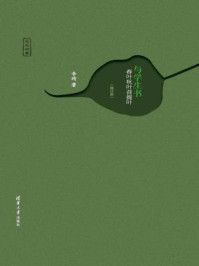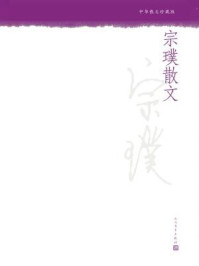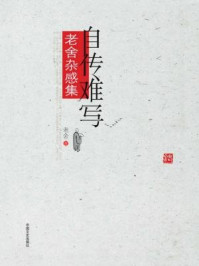




SHEN Fu, whose memoirs I have translated as Chapters from a Floating Life , was a painter and writer of Soochow in Kiangsu, a region of China long famous for the beauty of its women and the genius of its artists.Shen Fu was a failure—sensitive, romantic and impractical; a lover of beauty and laughter, of flowers and wine, of the wonders of nature and the company of good friends.His poet wife, Ch’en Yün, was a literate individualist.Charming, talented and gay, too independent of mind to fit easily into the household of her young husband’s family, she inevitably aroused the suspicion and antagonism of mean souls.
The two artists early found themselves as much out of place in the life of conservative Chinese officialdom as would a similar couple in the political or commercial environment of our twentieth century.The problems faced by Shen Fu and Yün, and the pressures which ultimately destroyed them, were essentially the same problems and pressures which have confronted and destroyed the gentle, beauty-loving nonconformists at almost all times and in almost all places.Man has seldom been tolerant of the eccentric in his midst.But Shen Fu—dogged by misfortune, harassed by creditors, existing in miserable poverty as he did—yet managed to leave in his memoirs one of the tenderest and happiest of all love stories.
Eldest son of a scholar family, Shen Fu was apprenticed to his father’s profession, that of secretary to magistrates, and in 1786 was appointed to his first post with the magistrate at Chihsi in Anhwei.Resigning a year later, following a disagreement with a fellow secretary, he joined a relative in the brewing business, only to have a rebellion in Formosa ruin their trade with that island; and as this trade was the backbone of the enterprise, the business failed.After this Shen Fu worked sporadically as secretary, teacher and merchant, but never held any post for very long.In 1803, while they were living in miserable circumstances in Yangchow, his wife Yün died.His father’s death followed a year later.
Cheated out of his inheritance through the machinations of his younger brother, Shen Fu was then reduced to living for a time on the charity of friends in Soochow, until, in 1805, he went to Chung-king as secretary to his old friend, Shih Yün-yü.In 1806 he found a post with the magistrate at Lai-yang in Shantung, but left shortly after to accompany his friend, Shih Yün-yü, to Peking.From that city he went the following year as secretary with an embassy to the Loochoo Islands, where he spent several years.After 1807 we know nothing of Shen Fu’s life, though it is known that he acquired some fame as a painter after his return from the islands, and that he painted a scroll on the subject of his voyage to Loochoo, for which Shih Yün-yü wrote a colophon.
Shen Fu’s autobiography, the title of which can be literally translated as Six Memoirs of a Floating Life, is a literary masterpiece; poetic, romantic, nostalgic and filled with emotion, it recreates a life essentially tragic, which yet held innumerable moments of an almost magical happiness and beauty.The work was originally in six sections, but when the manuscript turned up in a secondhand bookstore in Soochow in 1877 the last two sections were missing.The four remaining parts were first printed in that same year and have since been reprinted many times.The book is still widely read and can be bought today in any Chinese bookstore.An edition containing six parts was published in 1935, but the last two parts were obviously not authentic, being reprints from the works of various well-known authors.The edition I used was published within the last few years by the Wu Kuei T’ang(Five Cassia
 Hall) Publishing Company of Hong Kong.It too contains the spurious sections, neither of which I have included in this translation.
Hall) Publishing Company of Hong Kong.It too contains the spurious sections, neither of which I have included in this translation.
In translating the memoirs I have tried first of all to recreate the subtle emotional atmosphere, at once tragic, passionate and gay, which is, in my opinion, the outstanding characteristic of Shen Fu’s original.I have also tried to be as meticulous as I could in expressing the exact meaning of the Chinese words, at the same time trying to approximate the feeling of the author’s own way of expressing himself.This is a rather difficult job with languages as different from one another as Chinese and English and I do not know that I have even partially succeeded.
Each of the six parts of the memoirs deals with a different aspect of the author’s life; the first with his marriage; the second with small satisfactions and pleasures like gardening, flower arranging and the decoration of houses; the third with the misfortunes that plagued his entire existence, and the fourth with an account of his travels to Canton and other places of scenic interest.The lost parts recounted in one his voyage to the Loochoo Islands and in the other, the experiences of his later years and his ideas on life and living.
I have omitted many episodes from the fourth part, concerned with visits to temples and scenic places, which are rather alike and would not mean much to the reader unacquainted with the actual places described.Some sections of literary criticism, gardening and botany I have also left out, as I felt they were of too specialized a nature to be of general interest.Other episodes I have rearranged into a less confusing chronological order.
The Wade system of transliteration was used in spelling all the names except Yün’s, which I have spelled Yuen, thinking that this spelling would give a somewhat better approximation of the Chinese pronunciation.
The illustrations used in the book are reproductions of paintings by some of the best of the individualist painters of the Ch’ing dynasty—paintings which Shen Fu, Yün and their friends might have chosen, and in styles in which they might well have painted.
I should like to thank my friends Martha and LeRoy Davidson for their suggestion that I use such paintings as illustrations for the book.I should also like to thank the museum offcials who made it possible for me to use the paintings from their galleries: Laurence Sickman, Director of the William Rockhill Nelson Gallery of Art, Kansas City; and James F.Cahill of the Freer Gallery of Art, Washington, D.C.
Claremont, 1959 SHIRLEY M.BLACK
‘In this dream-like, floating life how often are we happy?’
From a poem by Li Po


